The iPad Pro Preview: Taking Notes With iPad Pro
by Joshua Ho & Ryan Smith on November 11, 2015 7:00 AM EST
For the past week, I’ve been working on a review of the iPad Pro. For better or worse it has been a very quick week and I’ve been working on the review right up to the embargo time. Rather than rushing out our review of Apple's first large-format tablet in an incomplete state, I'm going to hold it back so that we can get it right and produce the kind of high-quality article that we're known for.
Instead for today's embargo I want to take a more personal look at one segment of the iPad Pro's new features as a preview of things to come. The iPad Pro is a tablet of several firsts for Apple - their first large-format tablet, their first tablet with Apple's A9X SoC, and their first tablet clearly geared towards productivity as opposed to content consumption - and as a result one area that’s worth discussing in depth is whether or not the iPad Pro is useful to people that might not have wanted or needed an iPad before. With the iPad Air 2, for example, I felt quite strongly that while in some ways the larger display than a phablet or a mini tablet was useful, it was difficult for me to justify the cost of the tablet due to the lack of some productivity-focused tools.
Probably the simplest example of productivity use for someone like me is taking notes in class. While you can use a Bluetooth keyboard or a capacitive stylus with tablets like the iPad Air 2, they’re both notably flawed. Typing on a Bluetooth keyboard is often difficult when the keyboard on most of these tablets is usually too cramped/small, so relative to a normal laptop the iPad Air 2 would be at a disadvantage. Using a traditional passive capacitive stylus is also not particularly helpful because the tip is often extremely wide and makes it difficult to write with any precision. There’s also no real palm rejection with passive capacitive styluses, so the experience is pretty frustrating.
At the end of the day, with the iPad Air 2 and most tablets in general I found that trying to take notes with a tablet, whether with a keyboard, stylus, or both was slower than just taking out a sheet of paper and a pencil. Given the amount of coverage on the Apple Pencil and iPad Pro, I wanted to see for myself whether the iPad Pro would be able to replace pencil and paper for notetaking speed. To do this, I took the iPad Pro to class and simply relied on the built-in Notes application to try and see how well I could follow along in lectures and discussions. While some classes are such that words are sufficient to capture what is being said, with math and a lot of engineering classes I’ve found that a traditional QWERTY keyboard is just too slow to keep up at times when equations with Greek symbols and other notation that requires ALT key codes that are basically impossible to remember and quickly type out. The other problem is drawing diagrams, graphs, or anything that is otherwise extremely difficult to recreate solely with a text editor.
As a result, when taking notes on a tablet it's in my experience that it’s necessary to have a good stylus to be able to write out these various symbols, especially when writing quickly. This includes elements like well-tuned palm rejection, low inking latency, good pressure sensitivity, and good pressure to line width mapping. It’s also necessary to have high precision, such that the inking is exactly where the tip contacts the display, which can be difficult especially when using the stylus at an extreme angle. It’s also necessary for the stylus to be comfortable like a good pen or mechanical pencil for it to be something that is familiar and easy to learn rather than something that carries a significant learning curve. Something as simple as the way the tip interfaces with the glass of the display can really make the experience painful. If the tip is excessively sticky, slick, or soft it might be hard for a person to be as accurate and precise with a stylus when compared to more traditional writing instruments.
With this in mind, when I first picked up the Apple Pencil I noticed that the ergonomics and weight of it are within reason and comparable to a traditional pencil or pen. The one issue here that I continue to notice is that the glossy plastic has a tendency to feel a bit gross after a while as oil from the skin and dust can combine to form a sort of grime that tends to feel disconcerting when touched.
Pairing the stylus is accomplished by plugging it into the iPad Pro that the Apple Pencil will be used with. The Pencil seems to need Bluetooth, and turning it off on the tablet renders the stylus nonfunctional until Bluetooth is enabled again. If the stylus is unable to pair with the tablet for a period of time, it seems that re-pairing is necessary by plugging the Apple Pencil into the tablet again but initial setup is relatively painless, although ideally there shouldn’t need to be any re-pairng process.
As the iPad Pro is still relatively new, most applications don’t really support Apple Pencil extensively. As a result, I conducted this test solely using the pre-installed Notes application, which is relatively simple with only support for text input and inking with the Apple Pencil. The drawings that are created with the stylus appear to just be images to the end user, which can be re-arranged and edited at will.
In order to go through a discussion section, it is often the case that rather than another lecture rehashing concepts covered in previous lectures the instructor will give a problem set that is worked through over the course of the discussion, in the hopes that doing problems will help with learning. As it is often logistically difficult for an instructor to print out 30-50 copies of these problem sets, problem sets are often posted online as a PDF. With the iPad Pro, I found that there was no real need to print out these problem sets, as using the multitasking function to keep a PDF and the Notes app open simultaneously is genuinely useful and productive. Of course, this isn’t going to be unique to the iPad Pro or even iOS, but at this screen size this multitasking capability is useful when compared to something closer to a phablet in size.
Of course, these are all just tertiary aspects compared to actually taking notes and solving problems. In this regard, I think the Apple Pencil is surprisingly good. The first thing that I noticed here was that the friction of the tip against the display doesn’t feel like it’s off or wrong in some way. It’s really hard to say exactly what parameters lead to this feeling, but the rigid matte plastic tip has some kinetic friction to help with controlling movement fluently and also low static friction which means that the initial stroke is easier to control than some styluses that I’ve tried with soft, rubbery tips that tend to drag quite a bit.
The actual latency of the stylus is pretty much at the point where I can’t really notice it. I would say that the lagging distance between the tip and inking when moving a sufficiently fast pace is probably less than 5 mm at max, which is enough that I don’t really worry about latency even when I’m writing as quickly as possible to keep up with a fast-paced lecture. The pressure sensitivity is also surprisingly good, as something I’ve noticed with at least a number of stylus implementations is that very light touches are often ignored, and in order to see a proper difference in pressure levels it often seems that it’s necessary to apply significant pressure that is often in excess of what an actual writing utensil would take before damaging paper or something else. Precision is also incredibly good. Out of casual interest, I took a ruler and attempted to slowly draw straight lines in various angles to see if any wobble would occur. Regardless of pen orientation, lines remained straight as long as the tip didn’t vary its distance to the ruler.
The other aspect that I think really helps with proper use of the stylus is actually the sheer size of the display. With paper and pencil, the paper is always at the same height as where the hand rests, so writing is natural and relatively easy. Smaller devices are generally more difficult to accurately use the stylus with as a result, as the hand is usually resting on a desk so the phone is elevated relative to the hand or the writing hand is free-floating. I didn’t really think about this, but this is an ergonomic issue as well that I didn’t have with the iPad Pro, as my hand was usually resting directly on the display rather than being off to the side of the device.
The final aspect of the user experience here is software, and in that regard the Notes app is great for what’s implemented, but the features implemented are relatively few. In some ways this is exactly like paper because there’s no real way to transcribe notes taken with the Apple Pencil to a word processing document. However, I think the iPad Pro is probably the only device I’ve ever tried that comes close to actually achieving the same feel as pencil in paper. Obviously, there’s much more to this tablet than just how the stylus behaves, but so far the Apple Pencil is a seriously impressive stylus. Whether this is comparable or better than competitors like the Surface Pro is something I'm going to hold off on discussing until the full review - that alone can be quite the discussion - but so far I’ve found the iPad Pro to be a great tablet.



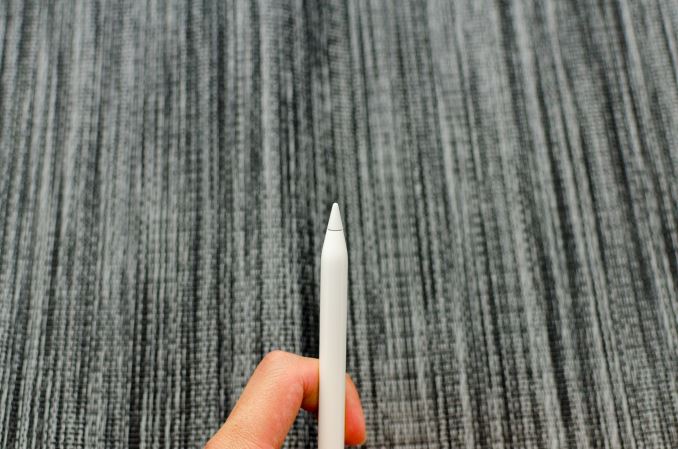
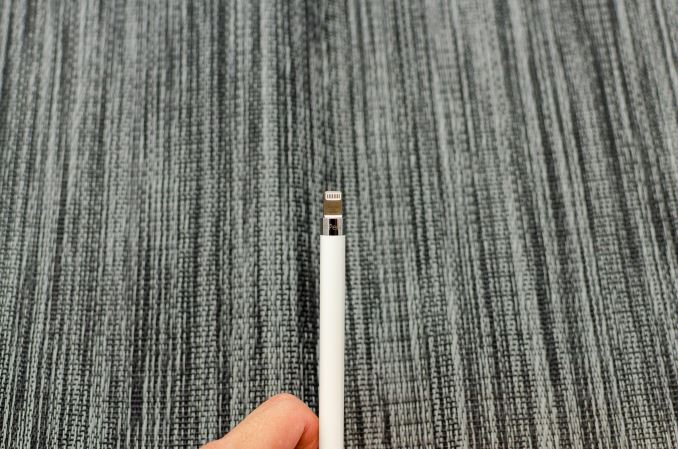
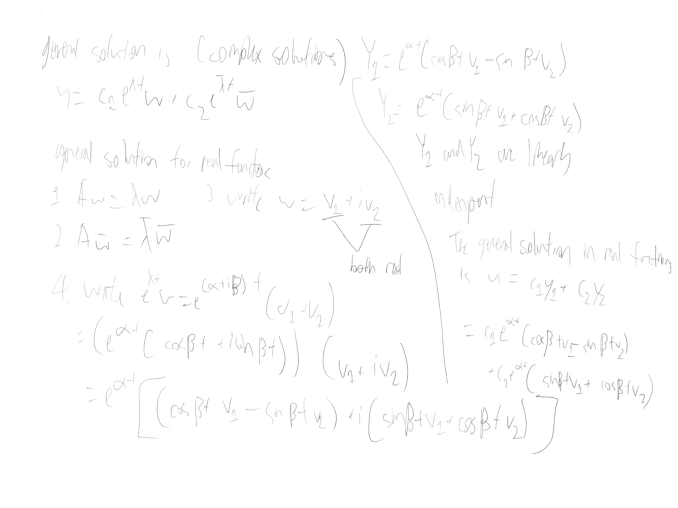
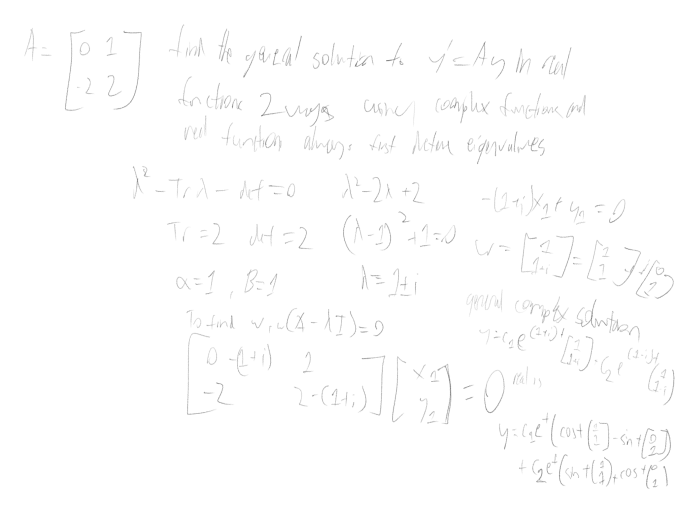
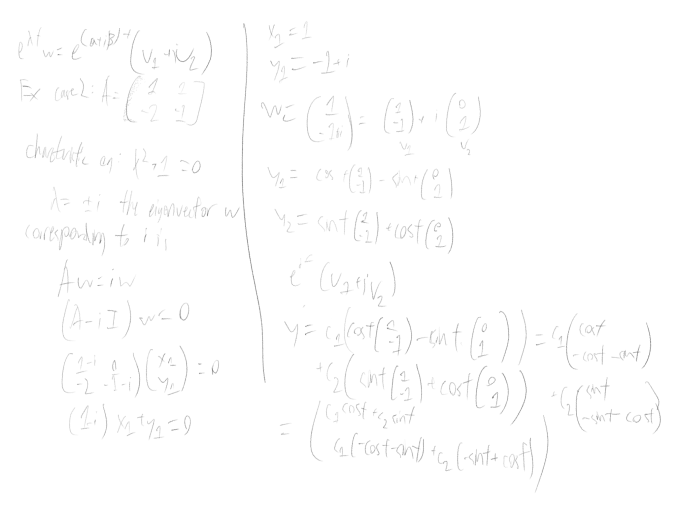








199 Comments
View All Comments
Spunjji - Wednesday, November 11, 2015 - link
100% agreed with that sentiment... always pushing the new.HollyDOL - Wednesday, November 11, 2015 - link
Ouch, that equation brings back memories...SaolDan - Wednesday, November 11, 2015 - link
I would like to see what that GPU could do in a x86 game. I guess we will never know:(id4andrei - Wednesday, November 11, 2015 - link
Not much. All rendering in mobile devices is done at half precision. Imagination's GPU is by design excellent for it.tipoo - Wednesday, November 11, 2015 - link
That's how the scores with only 50GB/s memory bandwidth for the whole chip together (not just GPU alone) are so high I guess, doesn't need as much bandwidth at half precision. Are these still tile based renderers? That saves bandwidth too. That's how you have this chip getting close to the Iris Pro/650M, if you don't take into account it's using half precision.id4andrei - Wednesday, November 11, 2015 - link
Precisely. Also from Anandtech, in a past article analyzing PowerVR, the tiling arch is especially adept at FP16 workloads.Macrumors are going insane with the Ars GFX benches. They actually think that A9x GPU(great as it may be) is faster than the one in the 13" rMBP(28W SoC).
akdj - Tuesday, December 29, 2015 - link
I'm I'd group Macrumors 'as one', nor the conversation you're referring to without spirited debate (about Iris Pro and Imagination's 10 core implementation in the iPP)They're certainly not 'going insane' ...but there's certainly something to the raw bench speeds on graphic oriented applications, their usage of the resources and most importantly, the software or as we call it now, the apps developed specific to that SoC versus a Skylake 6xxx with an iGPU attempting to run X86 software that is a lot better off with discrete GPU(s). IMHO, that's where the 'win' for ARM comes in, versus Intel
It's not ALL about benchmarking but weird enough; sites have been using the same comparisons since the earliest days of Android and iOS --- not a single complaint!
Apple drops the A7, the first 'mobile' SoC with 64bit capability sucking the wind out of Qualcomm execs and kicking Intel in the rear when it comes to better iGPU integration with their mobile bound laptop or tablet chips.
The A8's increase overall in computing and graphic power ...a marked improvement in a single year, a year Qualcomm and others STILL had a helluva time getting a working 64bit processor to market and the A8x, along with Swift and Metal as well as the continuity or "Handoff" to OS X and doubling the RAM in Air 2 TRULY shows off the capabilities of the second gen A-series processor/SoC with IT's graphic set --- then. 2015 Apple's third revision of the 64bit A9 processor sporting different IT GPU options across devices (iPhone --> iPad Pro) and it's near doubling in both compute and graphics, doubling of RAM across the board and the real and perceived speed differences on this generation's iOS devices compared to last is truly incomparable!
I owned the 6+, I upgraded to the 6s+. The difference is extreme.
I upgraded a year ago from Air 1 to 2. The differences are incredible --- including the current gotta have features of the new devices with slide over, dual app and video overlay without latency or delay is phenomenal and a feature set that may work in some capacity on the older devices but limitations are in place so as joy to kill the device.
One thing Apple maybe too good at, keeping the older devices working and with most updates the latest OS allows. I've got a ½ dozen iPad 4s we use in the field and not a single one has needed to be fixed --- & they've been through hell and back. I'm replacing them with the Air2s x4 and a pair of iPPs as the ONE thing the iPad does have over the rMBP's - constant connectivity. Always online and lighter, more durable with longer life than the rMBP (my favorite computer BTW, I bought the original 15" 2012 model, still going as strong today as the day I bought it. Wife needed an update to her laptop and just got her the 2.8/16/1TB CTO & I'm jealous! Amazing the speed difference between the older SSD ('12) models vs. the PCIe SSD solutions of today, I couldn't believe how quickly the Adobe CC suite downloaded (we're blessed with local gigabit ISP service) and then installed. Transferring larger files is mesmerizing. Using Thunderbolt or usb 3, it's nearly instantaneous!
The new rMBP (not so new anymore, but they're definitely building out the HiDPI displays and knocking them outta the park) is a revelation in my 30 years of computing. Starting on the IIe and transitioning to s 286 in corporate world, back to Mac in 2006 for my business haven't looked back. We keep a Windows machine for a Quickbooks machine and a few older games my son enjoys as well as the Xbox integration ...but OS X is certainly a phenomenal operating system in conjunction with iOS, it's mobile counterpart along with Handoff creates the perfect vertical and horizontally integrated and aggregated system we've ever had, without the need for a four year computer programming and networking degree --- Apple has designed a total system of work and play that simply keeps everything. Without the need to even 'think' about what you're doing
While still retaining the power of Terminal, Automator and Xcode free for all to simulate or build their own iOS or OS X apps themselves!
I believe MS is poised to challenge Apple and dethrone Samsung, as well as Android (no one goes home to their Chromebook to finalize the rendering of their motion captured that day, manipulate their photos in batch or finish their 3D composites they started with Adobe on their tablet earlier in the day.
Windows 10 is a decent OS and its ability to integrate and aggregate with its mobile platforms will eventually topple Android as the #2 mobile option challenging OS X for the top spot.
Time will tell but Apple has a tough time releasing shitty products these days. I wasn't sure about the Apple .watch my wife got me for my birthday. Today I can't imagine life without it as there's a couple dozen times a day my phone can stay in pocket, on desk or away from my immediate access while the watch tells me what I need to know.
Back to Macrumors, the debate(s) as there's several are spirited and with merit. Plenty of very informational material and links with the back and forth, very interesting debate to be sure as who'd have thought the debate itself would be happening this early? Apple has money. Apple poached plenty of chip experts many years ago, as well as low level programmers and SoC designers and fabricators --- it's been quick but Intel has rested on its laurels a long time with AMD's woes and complimentary discrete GPU OEMs. It's only been since the X86 architecture replaced PPC on OS X seemingly that Intel has developed an interest in building up the integration of GPU on their CPU builds.
And only the last couple years, since the Intel 3000 has IrisPro made the leap that DOES challenge Imagination Tech's formidable and mobile graphic solutions
...again, JUST to be having this debate says plenty about the job Apple is doing with their silicon
zeeBomb - Wednesday, November 11, 2015 - link
Well this came earlier than I expected. My moneys on they're using a 10 cluster gpu as well, or the GT900.dnzk - Thursday, November 12, 2015 - link
My money on they're using customize GPU 12 cluster 2xGT7600, like on A8X with 8 cluster 2xGX6450.V900 - Wednesday, November 11, 2015 - link
"With the iPad Air 2, for example, I felt quite strongly that while in some ways the larger display was useful, it was difficult for me to justify the cost of the tablet due to the lack of some productivity-focused tools".
This didn't make sense to me... The iPad Air2 has a bigger display?!? This is certainly news to me.
As is the lack of productivity tools. Not only is the full Office out on iOS, you can even get Autocad these days...